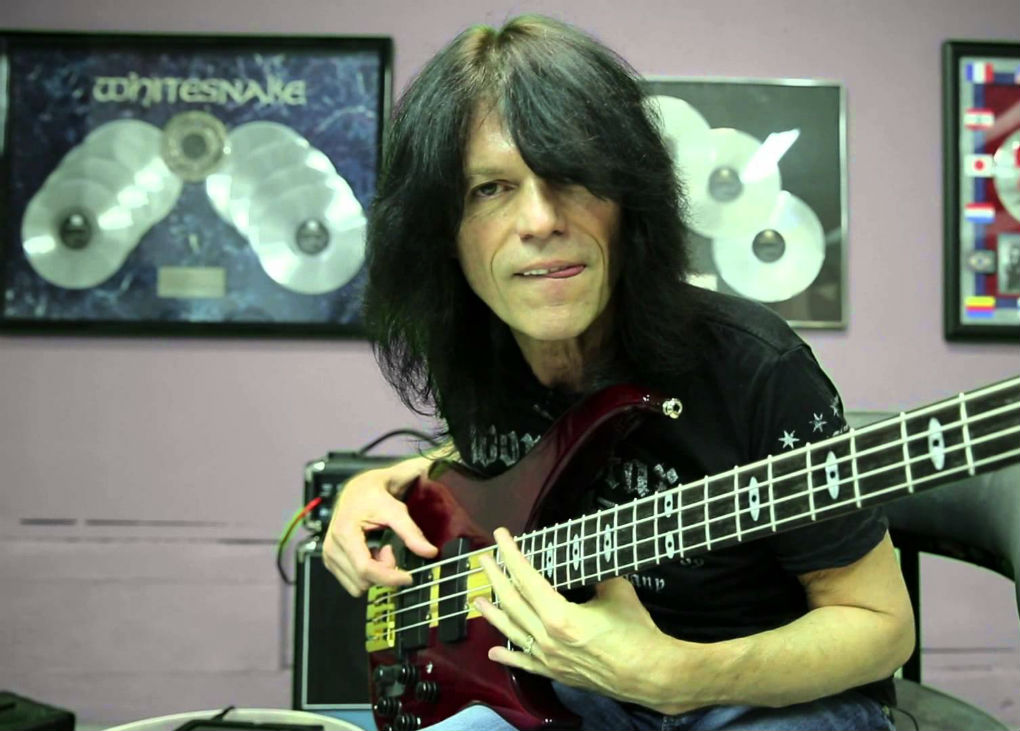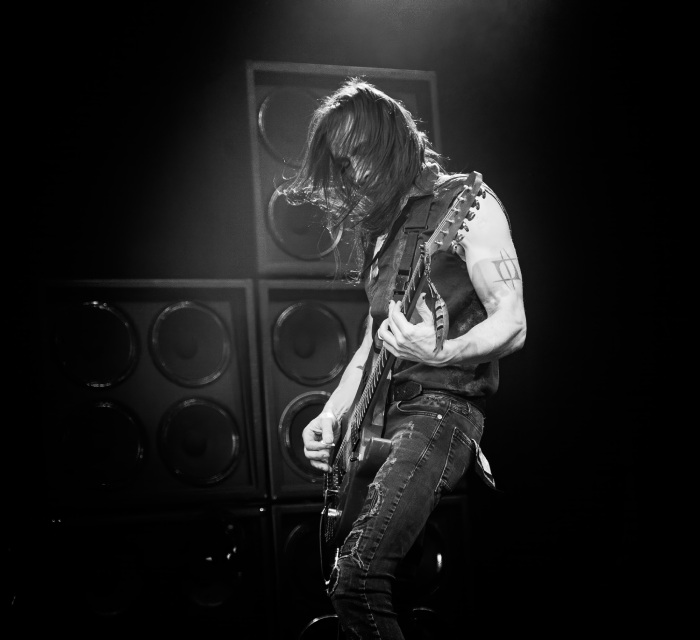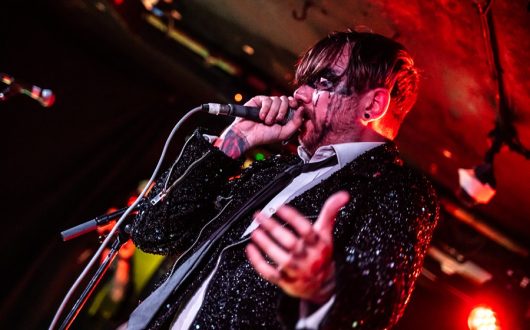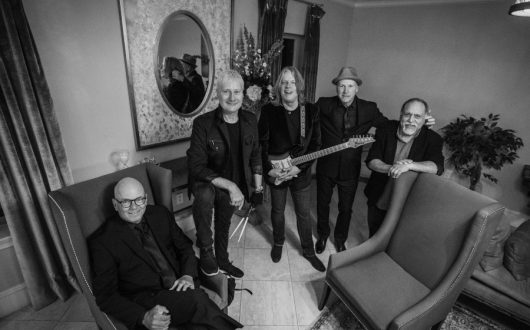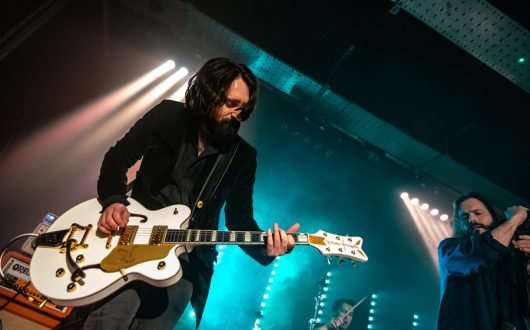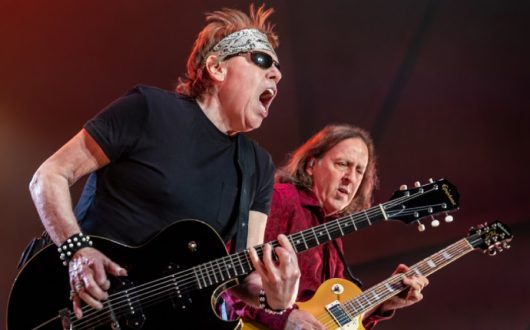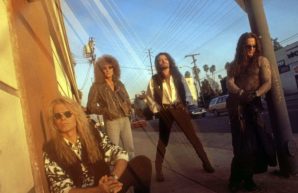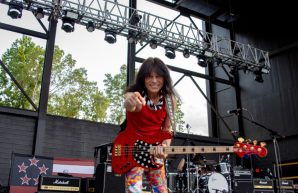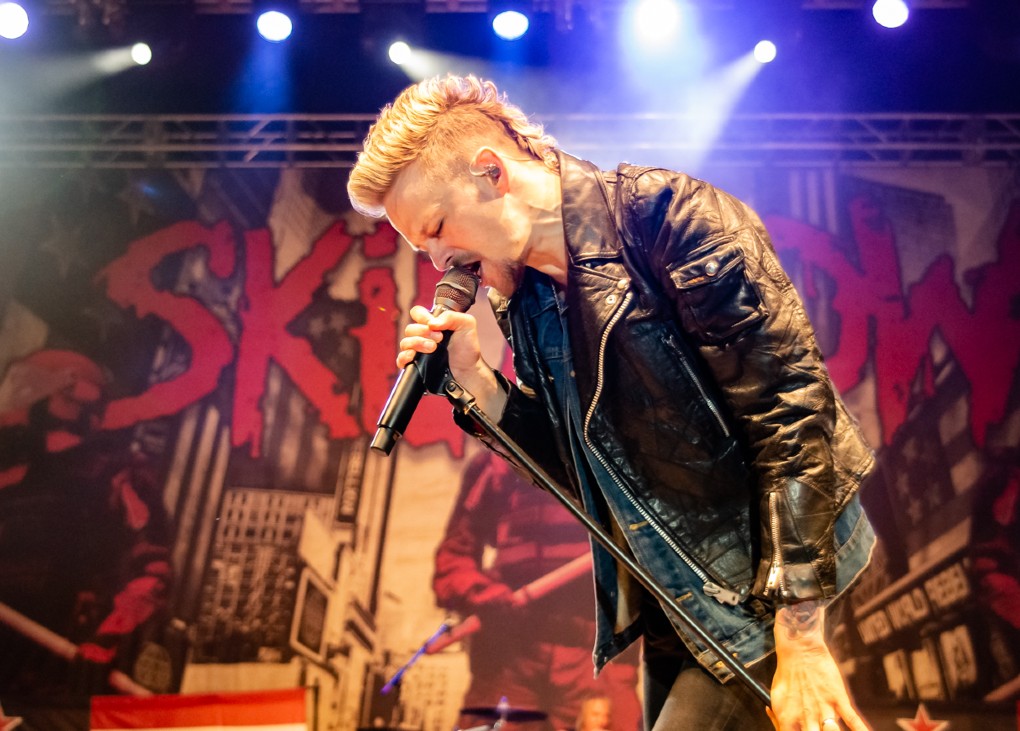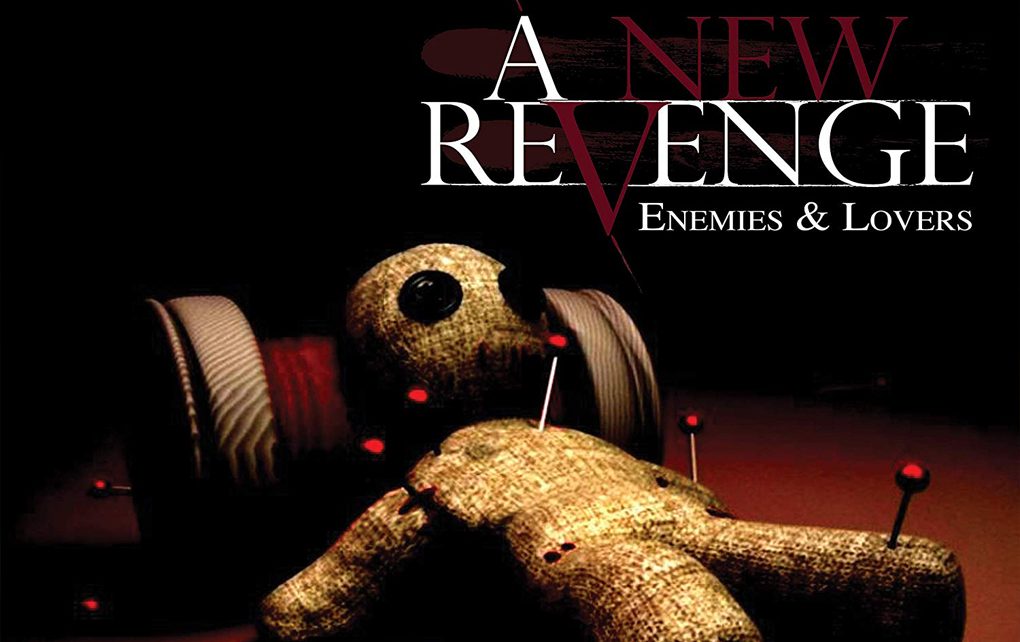Interview : Robert Cavuoto
Rudy Sarzo is most widely known as the legendary bassist for Quiet Riot and the touring bassist for Ozzy Osbourne in the early 80’s. Some might not know that he has also played in Whitesnake, Dio, Blue Oyster Cult, and with Yngwie Malmsteen. In 2008 he authored a book Off the Rails – Aboard the Crazy Train in the Blizzard of Ozz where he chronicles his time playing with Randy Rhoads in Ozzy Osbourne’s band and drama of touring. To add to his illustrious resume, he has joined the 60’s band, The Guess Who and on September 14th, they will be releasing their first CD in over 20+ years entitled, The Future IS What it Used to Be via Cleopatra Records.
I had the pleasure of speaking with Rudy about The Guess Who’s new CD, his ability to sync with any band seamlessly, a key aspect of his playing technique that he learned from Randy, and the impact of his Cuban heritage on his playing.
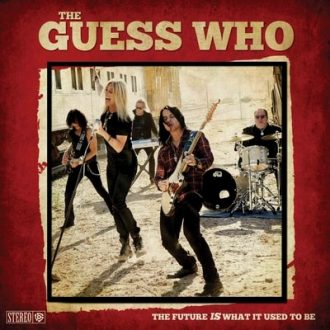
Robert Cavuoto: Tell me how you came to join The Guess Who?
Rudy Sarzo: The founding member and bassist of The Guess Who, Jim Kale, was retiring and they were looking for someone to step in. Sass Jordan who I toured with mentioned to her husband and singer of The Guess Who, Derek Sharp, to give me a call. I was delighted when I got the call as I listened to their music growing up and played their songs in clubs and at dances.
Robert Cavuoto: The band has its first CD out since 1995, they must be pretty excited?
Rudy Sarzo: Yes, there a built-in machine as far as the creative process and content development of the record. We have two really strong producers in the band Derek and our guitarist Will Evankovich. Will just finished co-producing and co-writing the new Styx record The Mission with Tommy Shaw. For our album they didn’t have to go out and find producers and engineers who might have a different vision of what the outcome of the record might be, it was all kept in-house. When you add Garry Peterson, who is the founding member of the band you have the lineage and foundation of the band’s sound.
Robert Cavuoto: I thought the songs really captured the spirit of the band from the 60’s and 70’s.
Rudy Sarzo: Absolutely, that was very well thought out from the very beginning. It was exactly the type of record The Guess Who wanted to make.
Robert Cavuoto: Did you perform on the CD?
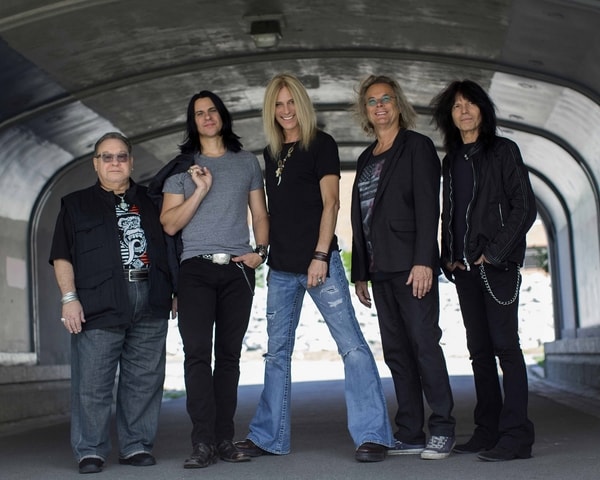
Rudy Sarzo: Yes, there were three bass players on the CD, Jim Kale, Michael Devin of Whitesnake who was subbing for Jim, and I was the last guy to contribute to it.
Robert Cavuoto: Tell me about your ability to adapt seamlessly to all the different bands you join.
Rudy Sarzo: It’s because I grew up playing in Top 40 tribute bands. Those musicians have spent their career emulating music. I could transcribe any type of music played on the radio because I had to play it that night [laughing] Anything from Paul Anka’s “You’re Having My Baby” to Deep Purple’s “Smoke on the Water” [Laughing]. I didn’t start playing heavy rock until I went to the West Coast and played with the Randy Rhoads version of Quiet Riot. Prior to that it Top 40 and R&B. After that, it was disco before I left Florida for the West Coast. After all of that, I started to get a better articulation of my right-hand technique and muting with my left. These were things I learned early on and was able to adapt.
Robert Cavuoto: You are so well known for playing bass and banging your head with Ozzy and Quiet Riot. How does your aggressive style of playing and performing merge with The Guess Who’s more melodic sound?
Rudy Sarzo: It’s interesting that you mention that. I learned that from Randy. He was the first guy who showed me how to disconnect the actions of my wrist from my arm. What that means is from the wrist down its all finesse. From the wrist up you can add all the passion! Randy had such a light touch, but if you look at his face it was super aggressive! If you watch his right hand, you can see it is very relaxed and his pinkie finger on the bridge to anchor himself as well as for muting. If he were to lift his right hand, it would be tons of feedback coming from his Marshalls. Back in the day, everything you saw on stage was plugged in. [Laughing] It was loud with a lot of feedback going on, so he was very articulate and careful with that. So I learned from Randy that you appear very aggressive, but it’s only from the wrist up!
Robert Cavuoto: That’s great insight. Can you share the meaning behind the title of The Guess Who’s new CD, The Future IS What it Used to Be?
Rudy Sarzo: It was a combination of throwing ideas around at lunch and one of the guys brought up the idea that things aren’t what they used to be. Garry said The Future IS What it Used to Be and it just stuck.
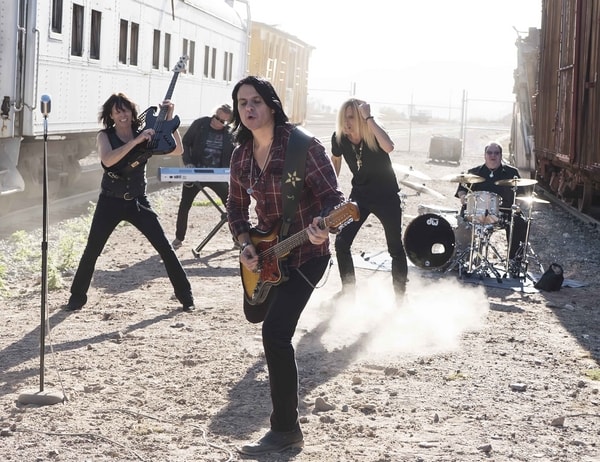
Robert Cavuoto: Prior to you joining Ozzy Osbourne’s band you were in the 70’s band, Angel. Who were the members as I believe they were in the process of rebuilding?
Rudy Sarzo: It was all the original member of Punk Meadow, Frank DiMino, Gregg Giuffria, and Barry Brandt. I was the third bass player after Felix Robinson.
Robert Cavuoto: They were a great band, but their multiple music styles confused the diehard fans going from progressive rock to rock to pop to disco. Were there demos in the works and what was the musical direction?
Rudy Sarzo: There were a lot of demos created after midnight at the Record Plant. You would get out of the studio, and it would be daylight. They were heading in a rock direction because they were no longer with Casablanca Records and were going back to their roots. I’m sure they are out there somewhere. I lost touch with the guys after I joined Ozzy. Ricky Philips who is now is Styx was the bass player after me.
Robert Cavuoto: At that point, you mention in your book about being homeless sleeping on someone’s floor. Was your faith ever shaken that you might not be successful in making it as a musician in a band?
Rudy Sarzo: I wasn’t homeless as I was paying my share of the rent; I just didn’t have a mattress and was sleeping on the floor. [Laughing]. I was working during the day and teaching so I always managed to keep a roof over my head. That was the most important thing. I had an epiphany during that time right before I joined Ozzy and made peace with God, as my relationship with God was more important than anything else in my life. If I didn’t make it as a musician then fine. As long as my fingers were going to keep moving, I was going to keep playing. It wasn’t only then, it’s even now that you have to let go of what you can, but what you cannot control let it go. It eventually fell into place.
Robert Cavuoto: God always has a plan, you just don’t know it. What was your backup plan if things didn’t work out?
Rudy Sarzo: I would burn the ship! [Laughing]. There was no backup. I speak with a lot of musicians, and if you really want to achieve something in life you can’t have a Plan B!
Robert Cavuoto: You were friends with Randy and played with him, were you constant awe of him and his playing knowing that it was beyond special?
Rudy Sarzo: I knew he was better than everybody else and that becomes your normal. Going on stage with Ozzy was my normal. I realized that it was a very unique band, something that could not be compared to anything else. I have never been in another band like that it was such a unique moment in time. That uniqueness becomes your standard. Every time I’m in a band I try to find those qualities from Ozzy’s band in whatever I’m doing.
Robert Cavuoto: Do you have any Randy memorabilia that he had given you while you played together?
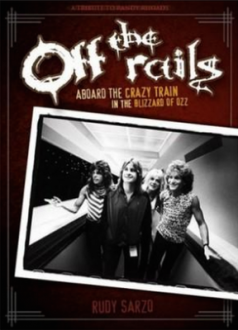
Rudy Sarzo: I have his practice amp. It’s a Roland Cube. There are only three people who have ever played through that amp; Randy, myself, and a close friend of mine. It was handed it down to me during the Diary of a Madman Tour because before a show Randy would warm up playing a classical guitar while reading classical music. He wasn’t warming up with the electric anymore.
Robert Cavuoto: Any plans to write a Quiet Riot book?
Rudy Sarzo: One of the reasons I wrote Off the Rails was because the number one question I get asked anywhere I go around the world is “What was it like to play with Randy Rhoads?” Every time I would tell an annotate I would walk away thinking I should have also said this or that. So I wrote everything I experienced with Randy. Randy had such a huge impact, and that is what people want to read about. Frankie Banali did a really cool documentary on Quiet Riot, and it covers everything. If anyone is interested in Quiet Riot, just watch that documentary.
Robert Cavuoto: Quiet Riot opened the US Festival in 1983, what was it like doing that and looking out at so many people?
Rudy Sarzo: I had been doing big shows with Ozzy so when you play in front of 70,000 people like we did at Day at the Green on July 4th, 1981, there really is no difference between 70 and 250 thousand, it’s just a lot of people as you can only see so far. It’s an infinite sea of heads. We played that show with rented gear, and my backline didn’t work. Fortunately, I knew the people who were running the monitor system from touring with Ozzy, and they put my bass through the monitors, these huge towers.
Robert Cavuoto: Do you still have the black & white Washburn Slammer bass?
Rudy Sarzo: No, I sold it to a collector overseas.
Robert Cavuoto: When you migrated from Cuba to the States did you experience any culture shock and was it tough integrating here?
Rudy Sarzo: My parents were middle class. In Cuba, my brother and I went to private school but nothing fancy and we lived in a nice community. When we moved to the United States, we had culture shock assimilating to a new identity. My family arrived in Miami, and there were not enough jobs, so we relocated in a couple of years to New Jersey in West New York. That’s where I went to my first public school. My first day of school I heard my teacher calling “Rudy, Rudy” as I was putting my books on my desk. I finally looked up to see who they were talking to and he said, “Yeah you “Rudy!” I replied, “No I’m Rudolfo.” He said, “You are Rudy from now on!” I understood that would make me less of a target, but my brother and I still got bullied; it’s part of life. My mother taught me to fight back if we got bullied. She toughened me up so people wouldn’t walk all over me. I felt in order to fit in I had to let go and that was the hardest thing until I realized I didn’t have to let go. When my parents returned to Miami in 1967 or 1968, I merged within a large Cuban community, and I spent more time in the community as my friends were Latin and my girlfriend was Cuban. When I started breaking away from the community and joined a rock band by going outside of Miami to Ft Lauderdale which was more Anglo, I felt that I was being more accepted. At that time it was expected if you were a Cuban and lived in Miami, you would follow in your heritages’ footsteps and blend in with that of your culture of Cuba. I saw things differently, maybe because I grew up in New Jersey and realized that things could be different. I made a choice to play Rock & Roll and saw that as the music of freedom. I always felt that Spanish colonial culture would use music to keep the masses distracted with dancing and drinking. Where I saw Rock & Roll in the 60’s as the voice of the future generation. Hearing everything from the Bob Dylan to The Beatles, that was freedom. It was everything that my communist country Cuba was not. I really embraced rock & roll; my Latin community was telling me that I was crazy and I would never be able to play in an American or English rock band. It would have been easy to stay in Miami, play disco, buy a Corvette like all my friends, and sell drugs. That wasn’t my plan! I wanted to be a recording artist and play Rock & Roll; real deal Rock & Roll! I left Miami and basically burned the ship, there was no coming back, and there was no Plan B I was going to make it! I put all my faith in God that it was going to happen.
Robert Cavuoto: You accomplished the American dream in doing so.
Rudy Sarzo: I think it was the global dream [laughing]. There are kids in Russia right now that want to do the same thing.
Robert Cavuoto: When you moved to the West Coast and started going to the Rainbow Bar & Grill. Who was the most famous celebrity that you met?
Rudy Sarzo: I met so many. I learned a lot of lessons from people who were my heroes, and they also happened to be suffering from their addictions. They told me that I can’t go down that path. I knew that I didn’t even have half their talent. At that point, they were so damaged other musicians didn’t want to play with them. They had a terrible reputation, and it became a warning, do not become an addict because you will never make it.
